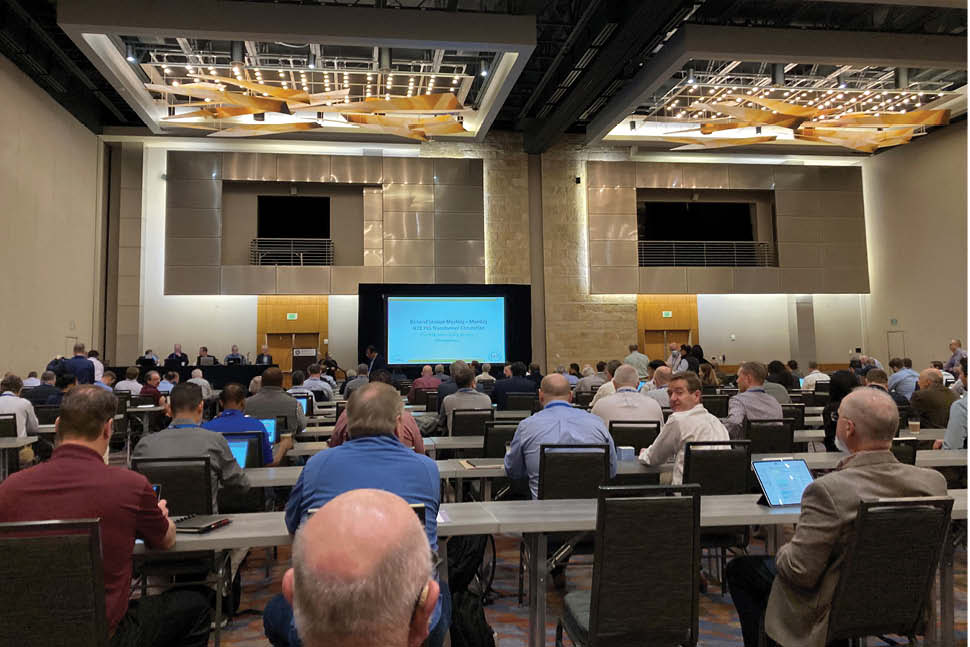
April 2022 / Vol. 27 No. 4
By Paul Orr, Senior Program Manager, Utility Systems, NEMA
For the first time in two years, members of the Institute of Electrical and Electronics Engineers’ Power Engineering Society Transformers Committee were able to meet in person. The Spring meeting was held in Denver and attracted more than 400 people to the opening general session.
According to its website, the Transformers Committee “is one of the largest and most active of the 17 technical committees within the IEEE Power and Energy Society (PES).
The Committee is comprised of technical and managerial representatives from manufacturers, consultants, vendors, and end users of electrical transformers and components. The scope of the Committee is to develop and update standards and guidelines for the design, testing, repair, installation, operation and maintenance of transformers, reactors and associated components that are used within electric utility and industrial power systems.”
Attendance swelled to nearly 80 members at the Distribution Transformer Subcommittee Task Force on Transformer Efficiency and Loss Evaluation. Task Force Chair Phil Hopkinson, CEO of HVolt Inc., remarked on his longevity (50 years) with the IEEE Transformers Committee.

Highlights of the task group discussion included:
Current Loading: In the past, utilities looked at transformer loading differently. Now, electrical utilities collect electricity usage data with smart meters. There can be 15-minute and hourly data collections from the smart meter. Utilities have to determine what time interval will get the best estimate of the transformer loading.
Loading Forecast: Electric loads will increase, especially for transportation. The three factors noted below will impact the generators of electricity as well as the transformers. The industrial and commercial sector will need new transformers.
Transportation Electrification
- Increasing the number of electric light duty vehicles
- Increasing the number of commercial electric vehicles
- More applications of autonomous electric vehicles
Building Electrification
- Higher efficiency of newer electric end-uses
- Corporate “green” goals and policies
- Impact of LEED, Energy Star, and other “green” codes
Codes/Standards/Policies/Laws
- More stringent energy codes and appliance standards
- Federal, state, and local carbon reduction mandates
- Fossil fuel restrictions equals more electric consumption — for example, restrictions on using natural gas in California for new (or existing) building construction.

In all, the spring 2022 conference and meetings were well attended and extremely productive. The fall meetings of the IEEE PES Transformers Committee will be held in Charlotte, N.C., October 16 – 20. ei